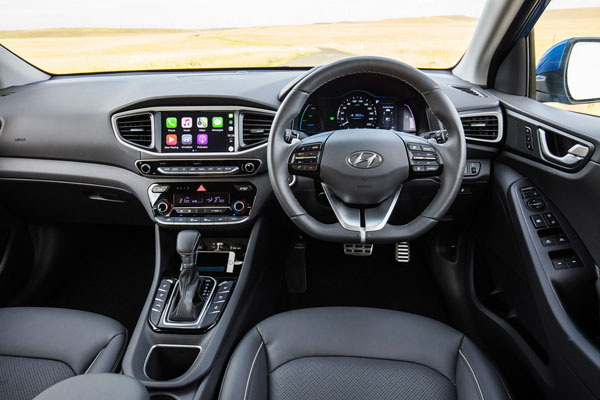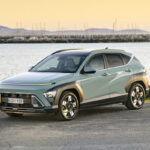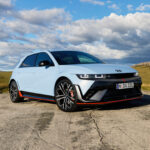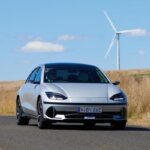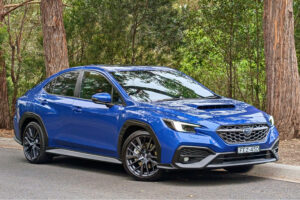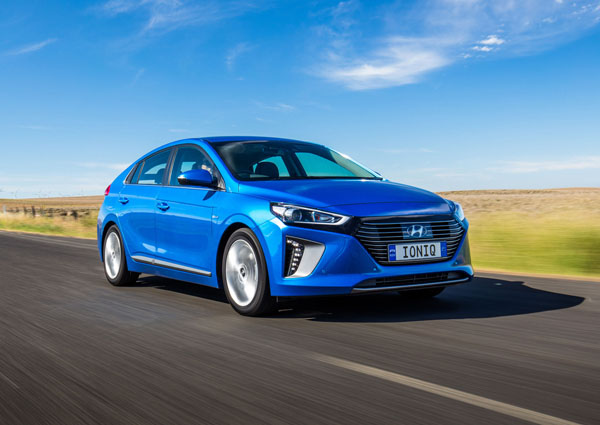
Car companies are not known to do things by halves. But by thirds, that’s a different matter. Hyundai, for example, is in the process of bringing not only one version of its electric powered Ioniq to Australia, but three all at once.
The petrol / electric hybrid is about to be joined by its plug-in hybrid and pure electric siblings for a trifecta no other manufacturer can match. In the meantime, the newcomer Hybrid is being put through its paces in a series of fleet tests.
We were able to borrow an iconic for a week, however, we are not part of the official testing regime.
The Ioniq Hybrid makes use of a 1.6-litre petrol engine of 77 kW combined with a 32 kW electric motor for a total power output of 109 kW. The system does all the work in maximising the power split.
No pricing has been released but the Hybrid is expected to trump the $35K price tag of its main rival, the Toyota Prius.
Ahead of the full-range launch this year, 70 Ioniq Hybrids have been placed with Australian Red Cross and other fleet users.
Official combined fuel consumption is 3.2 litres per 100 kilometres, at this stage fleet users are reporting about 4.0 litres per hundred kilometres.
On test, my overall figure was 4.5 litres per 100 kilometres combined. However, my desire to get better performance from the Hyundai hybrid was no doubt a factor in this figure. However, 4.5 litres per hundred is still impressively low.
STYLING
The Hyundai Ioniq has already been acknowledged with the 2017 Green Good Design Award from the Chicago Athenaeum: Museum of Architecture and Design and the European Centre for Architecture Art Design and Urban Studies, which celebrate important examples of sustainable design and the way companies are making the most positive impact on the environment.
Nothing screams out about the styling; it’s up to date without any of the futuristic fantasy touches sometimes found with other techno trendsetters. From the front, with its daytime running lights flanking the grille, it looks quite aggressive.
INTERIOR
Creature comforts are capped off with heated and ventilated front seats and a heated steering wheel, rare inclusions in this class of vehicle.
The second row is comfortable with enough room for three without too much of a squeeze.
A large 433 litre cargo space is easy to take up, even for quite large items. A 60:40 split-fold seat adds the flexibility to fit up to 1505 litres of gear.
INFOTAINMENT
An eight-inch touch screen is conveniently navigable and separate heating, ventilation and air-conditioning controls are equally as easy to operate.
Digital instrumentation can be customised to the driver’s desires, while satellite navigation and Apple Car Play/Android Auto are fitted as standard. An Infinity premium audio system with eight speakers and external amplifier offer good quality sound.
ENGINES / TRANSMISSIONS
Hyundai iconic hybrid has a 1.6-litre petrol engine and a permanent magnet synchronous electric motor and 1.56 kWh lithium-ion polymer battery. The powerplants are mated with a six-speed dual clutch automatic transmission.
SAFETY
Active safety features are electronic stability control, anti-lock braking, brake assist, electronic brake force distribution, autonomous emergency braking, adaptive cruise control, lane keep assist, blind spot monitoring and rear cross traffic alert.
A reversing camera with dynamic guidelines is complemented by front and rear parking sensors.
Airbags consist of driver and front passenger, knee airbag for the driver, side airbags for driver and front passenger and side curtain airbags, front and back. No local crash test rating is available.
DRIVING
Pushing the engine stop / start button on the Ioniq is greeted with an eerie silence. Dash lights are on but is there anybody home? The car sets off under electric power to be joined by the petrol motor, also on the quiet side, when the vehicle sees fit.
As for performance, in Eco mode the Ioniq, despite the driver’s giddy-up attempts, was reined in, producing a sluggish response off the mark and the need to choose overtaking options carefully.
Flicking the lever into Sport mode the Ioniq gained legs, scampering about the suburbs like a puppy let off the leash in a park. Paddle shifts add a further driving dimension for those who feel the computer has the car in the wrong gear.
A cumbersome foot operated parking brake really is ridiculous in a high-tech car like this.
Visibility behind is interrupted by a horizontal solid bar cutting the glass in two. This confuses our eyes and brain and gives the feeling visibility is less than in really is. As always, keep scanning all our mirrors.
As with all Hyundais, local engineers got their hands on the suspension, which sees the MacPherson strut / multi-link set-up cope well with pot-holes and patchy road surfaces. There’s a full-size alloy spare.
All three Ioniq drivetrains – hybrid, plug-in hybrid and full electric – will come to Australia later in the year and will be launched together. Pricing and full specification details will be announced closer to the launch date.
SUMMING UP
If the Hyundai Ioniq is a taste of what is to come from Hyundai on the sustainable motoring front, there is plenty to look forward to.
AT A GLANCE
SPECIFICATIONS (Hyundai Ioniq 1.6-litre petrol engine, plus permanent magnet synchronous electric motor, 1.56kWh lithium-ion polymer battery, 6sp dual-clutch automatic transmission, five-door hatchback)
ENGINE:
Capacity: 1.580 litres petrol, 1.56kWh electric motor
Configuration: Four cylinders in-line
Maximum Power: 77 kW @ 5700 rpm (petrol), 32 kW (electric)
Maximum Torque: 147 Nm @ 4000 rpm (petrol), 170 Nm (electric)
Fuel Type: Petrol 91 RON
Combined Fuel Cycle (ADR 81/02): 3.2 L/100km
CO2 Emissions: 92 g/km
DRIVELINE: Six-speed dual clutch automatic
DIMENSIONS, WEIGHT AND CAPACITIES:
Length: 4470 mm
Wheelbase: 2700 mm
Width: 1820 mm
Height: 1450 mm
Turning Circle: 10.6 metres
Kerb Mass: 1375 / 1467 kg
Fuel Tank Capacity: 45 litres
BRAKES:
Front: Ventilated disc
Rear: Solid disc
STANDARD WARRANTY:
Five years / unlimited kilometres




